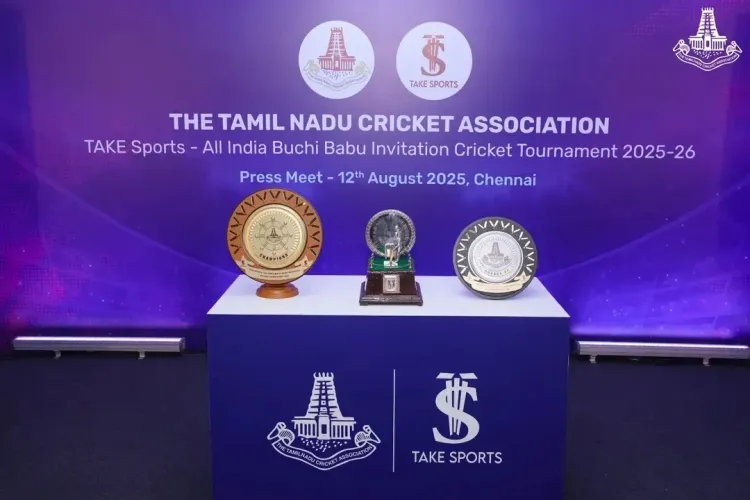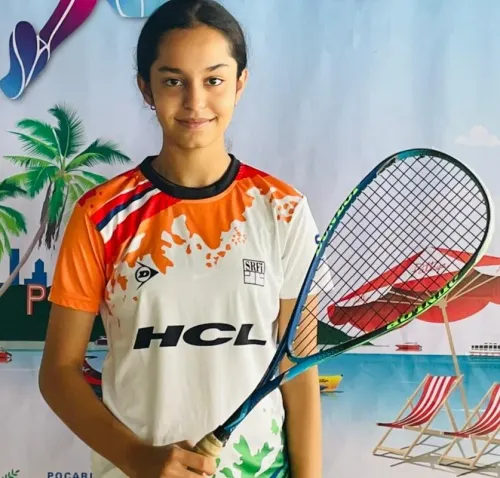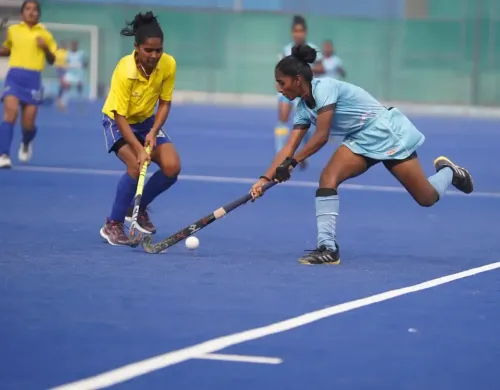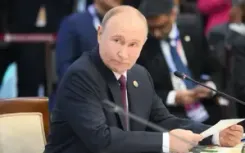How does the Historic Buchi Babu Tournament Gain New Relevance for State Units in Red-Ball Cricket?

Synopsis
Key Takeaways
- Buchi Babu tournament's history dates back to 1909.
- It is crucial for red-ball cricket preparation ahead of the Ranji Trophy.
- Participation of notable players enhances competition.
- The tournament allows for team combination assessments.
- Challenging Chennai conditions test players' adaptability.
Chennai, Aug 17 (NationPress) With just a few months remaining before the Ranji Trophy kicks off, the All India Buchi Babu Invitational tournament is set to commence in Chennai on Monday, running until September 9. This tournament is crucial as it serves as a vital preparation ground for state teams looking to enhance their skills in red-ball cricket.
The timing of this tournament is perfect for teams eager to gain an edge in red-ball cricket, especially with the Duleep Trophy approaching on August 28, when leading players will be called up for zonal duties. The Buchi Babu tournament, which made a comeback in 2023 after a 12-year absence, provides an excellent opportunity for state teams to refine their red-ball cricket techniques.
"This is a historic tournament that we last won in 2011. We had not participated since 2013, and its significance lies in the fact that there aren't many quality three-day or four-day tournaments across India that offer the challenging conditions found in the Buchi Babu competition," stated Samad Fallah, former pacer and now a bowling coach.
For Bengal head coach Laxmi Ratan Shukla, the appeal of this tournament lies in the invaluable red-ball cricket practice it provides. "It’s great to be back in the Buchi Babu competition after 6-7 years. We have a new team, and we look forward to solidifying selections for the upcoming season. Excellent preparation for red-ball cricket is essential, as it is the foundation of a true cricketer’s skills," he remarked.
Shukla also emphasized the unique experiences players can gain from long-format cricket. "Red-ball cricket encompasses various skills like reverse swing and spin variations, which are not as prominent in white-ball formats. This is why we are all eager to participate in this tournament, hoping it will serve as a platform for teams to prepare effectively."
First held in 1909/10 and named after Mothavarapu Venkata Mahipathi Naidu, a key figure in Madras cricket, the tournament was previously excluded from the Tamil Nadu Cricket Association calendar in 2017 to make way for the Tamil Nadu Premier League.
Its revival in 2023 has reignited interest among state units and Indian players, including notable names like Ruturaj Gaikwad, Prithvi Shaw, and Sarfaraz Khan, who are set to participate in this year’s tournament.
The presence of stars like Gaikwad and Shaw has motivated Maharashtra’s squad significantly. Fallah noted, "When top players participate, it inspires the entire pool of probable players. It reinforces their sense of belonging and elevates their competitive spirit. Our players, especially the young ones, are eager to learn from their experiences and strive for excellence this season."
This year, fourteen state units have registered, along with two TNCA teams, the President’s XI and TNCA XI. The tournament's allure does not stem from financial rewards—winners receive Rs 3 lakh and runners-up Rs 2 lakh—but rather from the preparation, match readiness, and team dynamics it fosters.
Fallah also pointed out the challenging conditions players will face in Chennai. "Our boys are accustomed to playing on red soil in Mumbai, but Chennai’s weather and conditions will test their limits, providing excellent preparation for the upcoming season. This tournament is about pushing boundaries and enhancing fitness and concentration over three days," he explained.
While this year’s weather in Chennai is milder than in the past, Shukla warned that players will still encounter challenges. "The red soil is beneficial for both spinners and batters, making it essential for bowlers to adapt. Although the climate is more forgiving, the competition will still be fierce and engaging."
Sixteen teams are divided into four groups for this tournament, with matches played over three days, where the first innings is capped at 90 overs and the second at 45. Knocking out rounds will revert to four-day matches with 90 overs per innings.
The tournament once enjoyed a prominent place alongside other historic red-ball competitions like the Moin-ud-Dowlah Gold Cup and the KSCA Invitational. While the former has disappeared and the latter has scaled down, the Buchi Babu tournament remains a crucial avenue for players to hone their skills, assess squad depth, and prepare for the demanding red-ball challenges ahead in the domestic season.
Buchi Babu Invitational tournament groups
Group A: TNCA President’s XI, Himachal Pradesh, Chhattisgarh, Maharashtra
Group B: Railways, Jammu & Kashmir, Baroda, Odisha
Group C: TNCA XI, Mumbai, Haryana, Bengal
Group D: Hyderabad, Punjab, Madhya Pradesh, Jharkhand.









